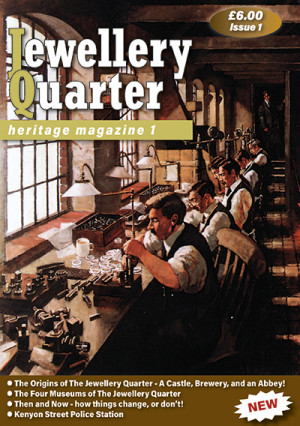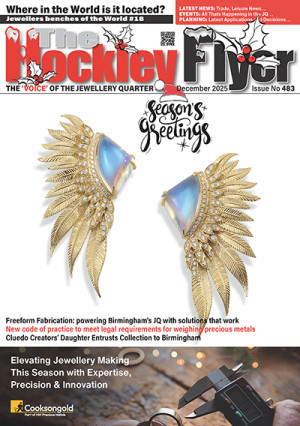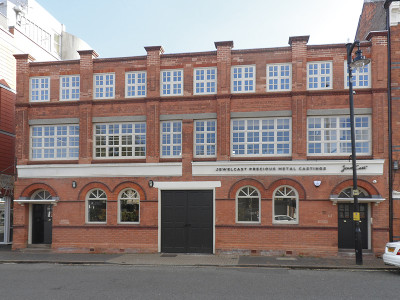 JewelCast will be moving their full business operations to their new building at the start of 2024. The 3-storey building will house their large manufacturing operations in Precious Metal Casting. Their 6 departments of, 3D Printing, CAD Design, Moulding, Administration, Casting and Quality Control will be spread across the large building offering an ‘all-in house’ service to the jewellery trade.
JewelCast will be moving their full business operations to their new building at the start of 2024. The 3-storey building will house their large manufacturing operations in Precious Metal Casting. Their 6 departments of, 3D Printing, CAD Design, Moulding, Administration, Casting and Quality Control will be spread across the large building offering an ‘all-in house’ service to the jewellery trade.
Set in the heart of the jewellery quarter this new location is sure to be super accessible for all in the trade!
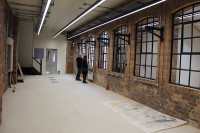 Restoration Project
Restoration Project
The building was in a very poor state of repair with a significant amount of vacant floorspace. Acquired by local manufacturing firm JewelCast, they are undertaking a restoration and refurbishment project of the building to provide space not only for their business but also a number of small jewellery manufacturers as well as retaining the existing retail offer.
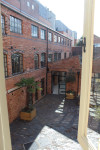
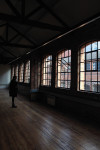 Works to the exterior of the building are being carried out and include repairs to the windows, brickwork, and roof. Internally, extensive repairs are being undertaken to make the space fit for purpose. Works are due to complete at the end of autumn 2023.
Works to the exterior of the building are being carried out and include repairs to the windows, brickwork, and roof. Internally, extensive repairs are being undertaken to make the space fit for purpose. Works are due to complete at the end of autumn 2023.
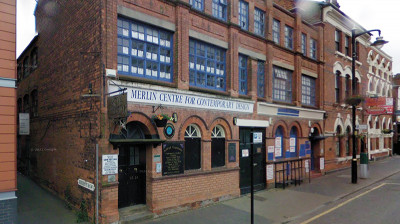 History 23-26 Warstone Lane
History 23-26 Warstone Lane
Built in 1870, the Grade II listed building was re-fronted and extended in 1905. Very little information exists about what kind of building was on the site before. However, the occupants listed from 1850-70 reflect the trend throughout the Jewellery Quarter of domestic residents employed in many trades, often working in their homes.
At first the properties were occupied separately and then Nos 23-24 became one, and Nos 25-26 another. The whole four properties were auctioned in 1876 as one lot and the advert gives an insight into the buildings:
“Lot 3 Warstone Lane – a remarkably well situated and improving Freehold property, comprising the four substantial three-storey houses. Nos 23, 24, 25, and 26 in Warstone Lane at the corner of Regent Row; and eight pleasantly situated houses in the rear with outbuildings and large yard, with frontage to Regent Row, and available as building land, the whole let, and producing at old fashioned and inadequate rents at £109 14s 10d”
Several families lived on the site before and after the current purpose-built factory was constructed, perhaps living in houses at the back.
Official Listed Status Grade II
Shop, offices and workshops, formerly manufactories. c. 1870, re-fronted and extended c.1905 and with later C20 alteration. Red brick with moulded brick and terracotta detailing and a slate roof covering.
PLAN: Evolved U-plan, with parallel rear workshop ranges enclosing a narrow rectangular yard.
EXTERIOR: Remodelled frontage range of 5 bays and 3 storeys, the ground floor of late C19 date, with early C20 joinery to end doorways, and late C20 inserted vehicle entrance to centre. Doorways with early C20 half-glazed double doors set in deep reveals, with shallow timber canopies to door heads below semi-circular brick arched overlights. To the side of each doorway, paired semi-circular headed windows with late C20 joinery rise from a moulded cill band, and an impost moulding linking with a hood moulds to the heads of door and window openings. Inserted double doors to centre below plain concrete lintel. Upper floor bays delineated by shallow brick pilasters, with raised rectangular centre panels, the pilasters linked by moulded cill bands to the upper floors. Transomed 4-light multi-pane timber window frames below concrete lintels to first floor, the centre opening subdivided by an intermediate brick pier. Raised rectangular brick panels above lintels. Upper floor with paired transomed 2-light frames under flat brick arches. Pilasters rise through moulded coping to form low piers with dentilled caps to interrupted shallow parapet. 2- storey workshop range to rear of No. 32 of 14 bays, extending south, with sloping blue brick cills, shallow brick arched heads and multi-pane cast iron frames to window openings. 2 dooways and 2 smaller windows between workshop windows. 14 bay storeyed range to rear of Nos. 25 and 26.
INTERIOR: Left hand entrance to modern shop interior with workshops to rear, right hand entrance to office and with half-glazed double doors giving access to stairs to upper floor and rear workshop range.
HISTORY: The Ordnance Survey map of 1902 shows the present arrangement of frontage range and parallel rear ranges. The inserted vehicle entrance may have replaced a central passage entry to the rear yard. Forms a group with No.28 Warstone Lane ( q.v.) and No.29 Warstone Lane (q.v.) An evolved U-plan manufacturing complex with extensive rear workshop ranges , the street frontage remodelled c.1900 to provide enhanced upper floor light and a more modern facade. The complex illustrates 2 sequential architectural styles which characterise the late C19 and early C20 phases of development within a manufacturing quarter of Birmingham now recognised as being of international significance.




